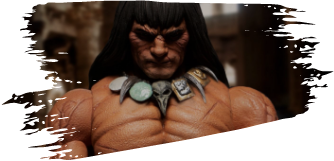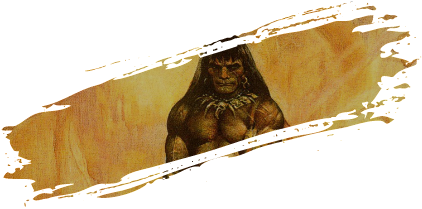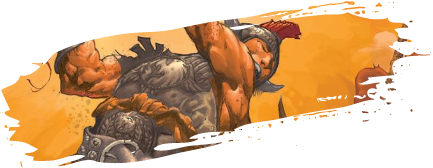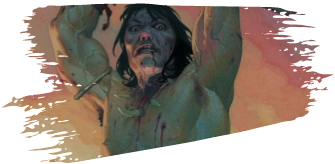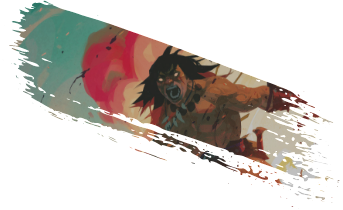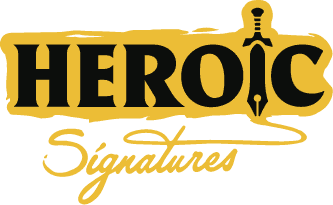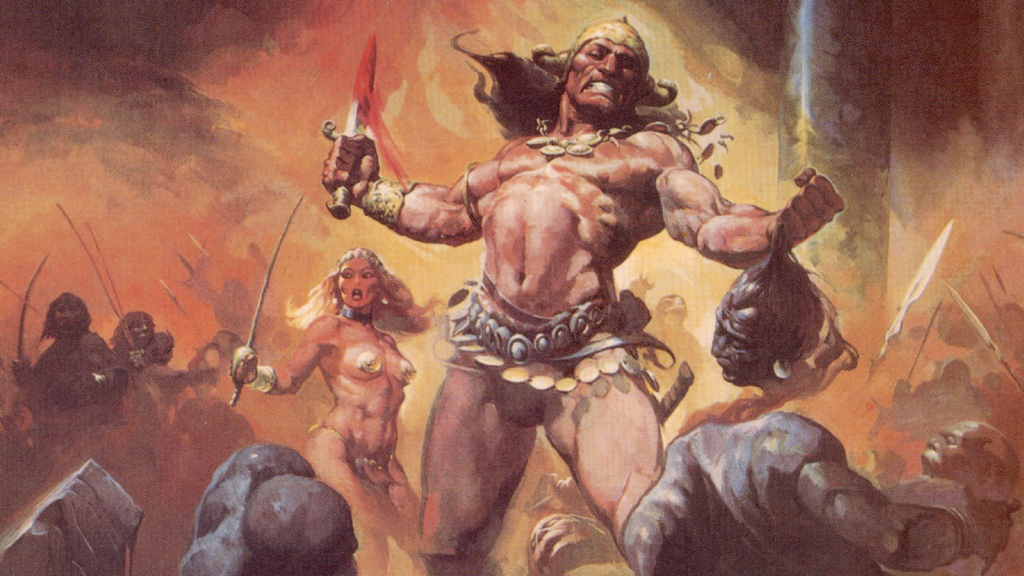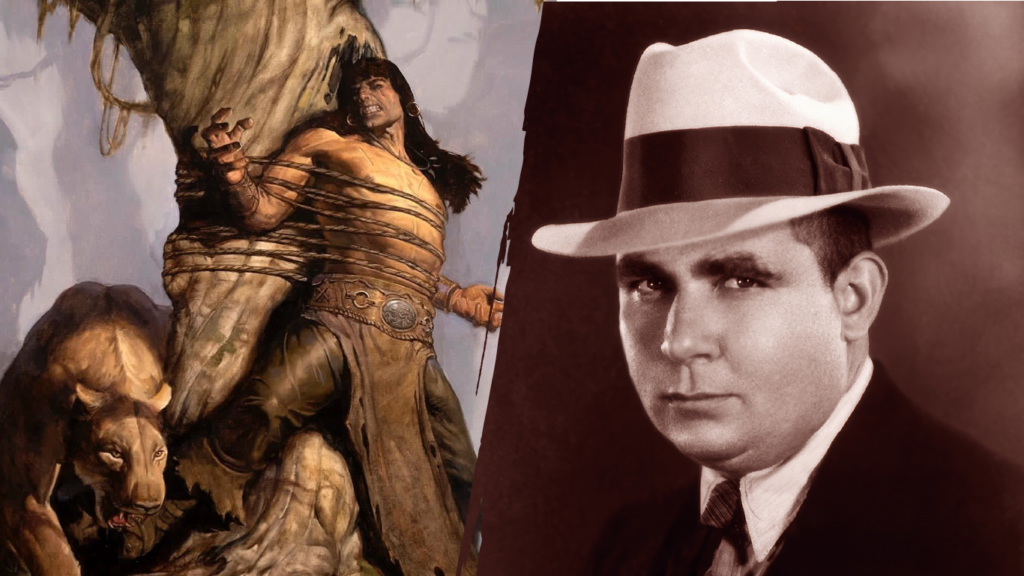
He is the alpha and the omega of heroic fantasy, the ultimate icon of sword and sorcery. Born from the fertile imagination of Robert E. Howard in 1932, Conan the Barbarian has become a cultural phenomenon, a character whose influence has reshaped the very landscape of the genre he helped to define.
From the page to the screen, from the console to the canvas, the Cimmerian’s presence looms large, his brooding visage and rippling thews instantly recognizable to fans the world over. But what is it about this savage warrior from a bygone age that has so captured the imaginations of generations?
Join us as we explore the roots of his creation, the cultural context that shaped his development, and the indelible mark he has left on the realms of fantasy and beyond.
So sit back, pour yourself a flagon of your favorite ale, and prepare to be transported to the realm of the one, the only, Conan the Barbarian.
Deep in the Heart of Texas
The seeds of Conan’s genesis were sown long before the Hyborian Age was but a glimmer in the eye of Creation. Robert E. Howard, the visionary architect of the Cimmerian’s saga, drew deeply from the well of human imagination, weaving together disparate strands of legend and lore to craft a hero who would stand the test of time.
Like the Norsemen of old, whose sagas of battle and bravery echoed through the halls of Valhalla, Conan sprang from the very essence of the northern European barbarian warrior. In the flickering light of a Texas oil lamp, Howard pored over the tales of these ancient heroes, their exploits etched in the likes of legends such as Bullfinch and Baring-Gould. From the black sands of Iceland to the wispy plains of the Steppe, the young writer drank deep from their wild, untamed spirits.



Still, Conan was much more than a pastiche of mythic archetypes. In the pages of pulp magazines like Adventure, Howard found kindred spirits in the likes of H. Rider Haggard’s Eric Bright-Eyes and Harold Lamb’s Viking stories. And in the haunting figure of Ragnar, the Norse wanderer of Jack London’s The Star Rover, Howard glimpsed the restless spirit of a man out of time, a warrior whose travels would carry him from the frozen north to the sun-drenched shores of the Mediterranean.
But the roots of Conan’s creation ran deeper still, tapping into the very marrow of Howard’s own experience. In the oil fields and roughneck camps of Depression-era Texas, the young writer rubbed shoulders with men of sinew and grit, their calloused hands and weathered faces a testament to the strength of man himself. From boxers and brawlers to roughnecks and roustabouts, these were men who lived and died by their own code of honor, their lives a constant struggle against the pitiless forces of nature and the whims of fate.
I am Man, Hear Me Roar, Damn it!
In the turbulent decades of the early 20th century, as the engines of progress churned and the gears of industry ground inexorably onward, a silent crisis was unfolding in the hearts of men. The old ways were crumbling, the misty, ancient codes of honor and valor scorching under the sunbeams of modernity. In this brave new world where the brawn of the laborer was slowly being replaced by the tireless might of the assembly line, men found themselves adrift, their very identity called into question by the tides of change.
It was into this maelstrom of uncertainty that Robert E. Howard thrust his greatest creation, a hero who would stand as a bulwark against the encroaching darkness. Conan the Barbarian, born of the same clay as the tough-as-nails Texans Howard knew, was more than just another adventurer. He was an avatar of unambiguous masculinity, a towering, virile figure whose every deed exuded the uncontrolled power that lay coiled within the heart of every man.
In an age when traditional masculine virtues were being slowly morphed by a tide of progress, Conan burst onto the scene like a bolt of lightning. With each swing of his mighty sword, each defiant roar in the face of danger, the Cimmerian became a symbol of hope and inspiration, a reminder that even in the darkest of times, man cannot be stopped.


This, of course, was only possible because Conan was himself a reflection of the writer’s own deepest fears and desires. For even as Conan captured the imaginations of a generation, his creator was toiling away in obscurity. From cramped confines of his tiny Texas bedroom, Robert E. Howard poured his heart and soul onto the page, desperate to showcase the unbreakable spirit of a man who refused to surrender, even in the face of overwhelming odds.
Little could Howard have known that his creation would one day transcend the bounds of the printed page, his vision of Conan taking on a life of its own in the decades to come. But even as the Cimmerian’s saga was reimagined and reinterpreted by countless artists and writers, the essence of Howard’s original vision remained untouched.
And at the forefront of this new wave of Conan mania was a young artist named Frank Frazetta, whose groundbreaking illustrations would come to define the look and feel of the Cimmerian for generations to come.
The Big F
Long before he turned his hand to the tales of the Hyborian Age, Frazetta had already made a name for himself as a master of the comic book medium. His groundbreaking work at EC Comics in the 1950s had redefined the art of sequential storytelling, his bold lines and dynamic compositions setting a new standard for the industry. But it was in the realm of paperback cover illustrations that Frazetta would truly make his mark, his paintings for the Edgar Rice Burroughs series of novels hinting at the greatness to come.
And then, in 1966, lightning struck. Hired to paint the cover for “Conan the Adventurer”, Frazetta unleashed a vision of the Cimmerian that would forever change the face of fantasy art. However, this pivotal moment might not have happened without the guidance of Frazetta’s friend and fellow artist, Roy Krenkel. It was Krenkel, an avid fan of Robert E. Howard’s work, who introduced Frazetta to the Conan stories and provided insight into the character’s essence. Moreover, Krenkel exposed Frazetta to the art of Zdeněk Burian, whose prehistoric scenes would greatly influence the primal energy that Frazetta infused into his Conan paintings.






Gone were the staid, static poses of the past, replaced by a figure of raw, unbridled power, his muscles rippling beneath bronzed skin, his eyes blazing with the fire of a thousand battles. In Frazetta’s hands, Conan became a force of nature, a primal avatar of masculinity whose very presence seemed to crackle with barely contained energy.
The impact of Frazetta’s Conan paintings cannot be overstated. Virtually overnight, the Cimmerian became the quintessential fantasy hero, his image gracing everything from paperback covers to posters, comics to album art. The success of the Conan paperbacks in the 1970s owed as much to Frazetta’s electrifying artwork as it did to Howard’s prose, the two men forming a creative partnership that transcended the bounds of time and space.
Yet for all the raw power of Frazetta’s vision, there was a surprising fidelity to Howard’s original descriptions of the Cimmerian. The square-cut black mane, the smoldering blue eyes, the broad, muscular frame – all were present and accounted for, rendered with a savage grace that perfectly captured the essence of the character. Even when Frazetta took liberties with Conan’s appearance, such as the now-iconic fur loincloth, his choices always seemed to enhance rather than detract from the character’s primal allure.
But Frazetta’s genius lay not just in his ability to bring Howard’s words to life, but in his uncanny knack for imbuing his paintings with a sense of raw, untamed emotion. Informed by the work of artists like Zdeněk Burian, whose prehistoric scenes pulsed with a feral energy, Frazetta’s Conan was a creature of pure instinct, a barely-contained explosion of primal fury and animal magnetism. In his hands, the Cimmerian became not just a hero, but a force of nature, a walking embodiment of the savage vitality that lies coiled within the heart of every man.
It is this visceral power that has ensured the enduring legacy of Frazetta’s Conan, his paintings continuing to inspire and electrify new generations of fans. From the glossy pages of comic books to the flickering screens of cinema, the Cimmerian’s influence can be felt in every corner of the fantasy genre, his image as much a part of our cultural lexicon as the works of Tolkien or Lewis.
And yet, for all the imitators and homages, there remains something singularly compelling about Frazetta’s original vision, a raw, unvarnished power that speaks to the primal heart of the human experience. In his paintings, we see not just the triumph of the hero, but the indomitable spirit of mankind itself, the unquenchable fire that drives us to scale the highest peaks and plumb the darkest depths of our own souls.
From Pulp to Pop
In the decades since Robert E. Howard first breathed life into the pages of Weird Tales, the influence of Conan the Barbarian has spread like wildfire. At the heart of Conan’s enduring appeal lies his iconic look. Forever immortalized by the brushstrokes of Frank Frazetta, Conan’s aesthetic has become so synonymous with the barbarian adventurer archetype that it is impossible to imagine the sword and sorcery genre without it.
From the towering figure of He-Man, with his bronzed skin and flowing locks, to the post-apocalyptic wanderings of Thundarr the Barbarian, the echoes of Conan’s influence can be felt in every corner of the fantasy realm. Even in the pixelated worlds of video games, the Cimmerian’s spirit lives on, his likeness gracing the covers of countless titles, from the hack-and-slash mayhem of Golden Axe to the dark, brooding landscapes of Rastan.
As the decades wore on, Conan’s influence only grew more pronounced. In the 1970s, as the Marvel Comics series introduced a new generation to the tales of the Hyborian Age, the character’s impact on the world of fantasy illustration became impossible to ignore. From the iconic beauty of Boris Vallejo’s canvases to the otherworldly visions of Jeff Jones and Ken Kelly, the aesthetics of sword and sorcery art were forever changed by Frazetta’s work, which had become the gold standard by which all others would be judged.




And then came the movies. In 1982, with the release of John Milius’s Conan the Barbarian, the character’s place in the pantheon of pop culture icons was forever sealed. With Arnold Schwarzenegger’s musclebound portrayal of the Cimmerian warrior, the character was suddenly catapulted into the mainstream, his name tantamount with the very idea of the barbarian hero. From the halls of academia to the schoolyards of Middle America, everyone knew the name of Conan, even if they had never read a single page of Howard’s original tales.
In the years that followed, as the Cimmerian’s adventures were adapted and reimagined across every medium imaginable, from the pages of comics to the pixels of video game screens, his influence only continued to grow. For a new generation of fans, weaned on the hyperkinetic action of the Schwarzenegger films and the lush, vivid imagery of the Marvel comics, Conan became the gateway to a world of savage wonder, a realm where the only law was the law of the sword, and the only truth was the truth of a man’s own strength and courage.
Today, as the character enters his ninth decade, his impact on the realms of fantasy and popular culture shows no signs of waning. From the Broadway stage to the online gaming arena, the Cimmerian’s presence can still be felt in every corner of the entertainment landscape, his influence as pervasive and enduring as ever. For a new generation of fans, raised on the cutting edge of digital technology and the boundless possibilities of the virtual world, Conan remains a touchstone, a reminder of the timeless power of storytelling and the enduring appeal of the human spirit.
Pixels and Parodies
As the 21st century dawned, the world of entertainment underwent a seismic shift. The rise of digital technology and the explosion of the internet opened up new frontiers for storytelling, and the realms of fantasy were quick to follow suit. In this digital zone, the spirit of Conan found new life, his essence translated into a language of ones and zeroes that would carry his legend to new heights of popularity and influence.
At the forefront of this digital revolution were the video games. From the earliest days of the arcade to the cutting edge of home console technology, the figure of the barbarian warrior had been a staple of the gaming landscape, his brawny visage gracing countless pixelated landscapes and his mighty thews powering endless hours of hack-and-slash mayhem.
But it was in the world of online gaming that Conan truly found his digital apotheosis. With the release of the Age of Conan in 2008, followed by Conan Exiles in 2018, the Cimmerian warrior was suddenly thrust into the spotlight once again, his savage world brought to life in a massively multiplayer online game that allowed players to carve out their own slice of the Hyborian Age. For a new generation of fans, Conan Exiles was a revelation, a chance to step into the boots of the legendary barbarian and forge their own tales of blood and thunder.
But Conan’s conquest of the digital realm was just the beginning. His influence, like a relentless tide, seeped into every corner of popular culture. The barbarian warrior, with his hulking frame and brooding demeanor, became an irresistible target for parody and satire.
Terry Pratchett’s Discworld novels introduced Cohen the Barbarian, an aged but formidable warrior who gleefully subverted fantasy tropes. Meanwhile, in an unexpected twist, Chevy Chase graced the National Lampoon’s Vacation movie poster as a loincloth-clad hero wielding a tennis racket instead of a sword. From literature to cinema, Conan’s spirit manifested in the most unlikely places.



Animation proved to be a most fertile ground for the Cimmerian’s adventures. The short-lived but beloved Korgoth of Barbaria left an indelible mark, while Son of Zorn brilliantly blended live action and animation to create a satirical take on both Conan and He-Man. What made these works stand out? Their ability to use the barbarian warrior as a touchstone, mining his larger-than-life persona and over-the-top adventures for comedic gold.
Yet it is Genndy Tartakovsky’s Primal that truly captured the essence of Robert E. Howard’s original vision. More homage than parody, this stunning work of visual storytelling follows a caveman and his dinosaur companion through a savage world. With haunting visuals and wordless narrative, “Primal” pays loving tribute to the barbarian archetype, with every frame acting as a nod to Conan’s enduring appeal in the modern media landscape.
Heroic Signatures and Conan’s Future
As the guardians of Robert E. Howard’s legacy, Heroic Signatures stands at the vanguard of Conan’s influence. They recognize that, like other iconic figures such as Dracula, Tarzan, Sherlock Holmes, and Superman, Conan has long since transcended the medium of his birth, becoming a cultural icon that spans generations.
While the original Howard stories will always be the canonical foundation upon which the character rests, Heroic Signatures understands that in the 21st century, Conan is so much more than a literary creation. He is a comic book hero, a cinematic icon, a cartoon adventurer, a video game avatar, and above all, the quintessential embodiment of the fictional barbarian warrior.
The challenge, then, is to ensure that Conan remains a vibrant and vital presence in the modern pop culture landscape. Whether it be through new comic book adventures, blockbuster films, or cutting-edge video games, Heroic Signatures is committed to introducing the Cimmerian to new generations of fans, ensuring that his legacy endures for years to come.
For at its core, the tale of Conan is one that speaks to the eternal human struggle, to the insatiable thirst for adventure and the will to survive against all odds. It is a story as old as time itself, a paean to the primal power that lies at the heart of us all. And as long as there are those who yearn for tales of savage heroes and untamed wilderness, the spirit of Conan will continue to endure, an immortal testament to the power of the human imagination.
So let us raise a toast to the Cimmerian, the greatest of all barbarians, and to the visionary creatives at Heroic Signatures who have taken up the mantle of his stewardship. May his adventures never cease, and may his influence continue to inspire and enthrall generations of fans for all time. For in the end, that is the true measure of Conan’s legacy – not the trappings of genre or medium, but the eternal appeal of a hero who embodies the indomitable spirit of humanity itself.

Lo Terry
In his effort to help Heroic Signatures tell legendary stories, Lo Terry does a lot. Sometimes, that means spearheading an innovative, AI-driven tavern adventure. In others it means writing words in the voice of a mischievous merchant for people to chuckle at. It's a fun time.

